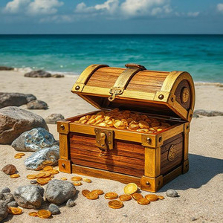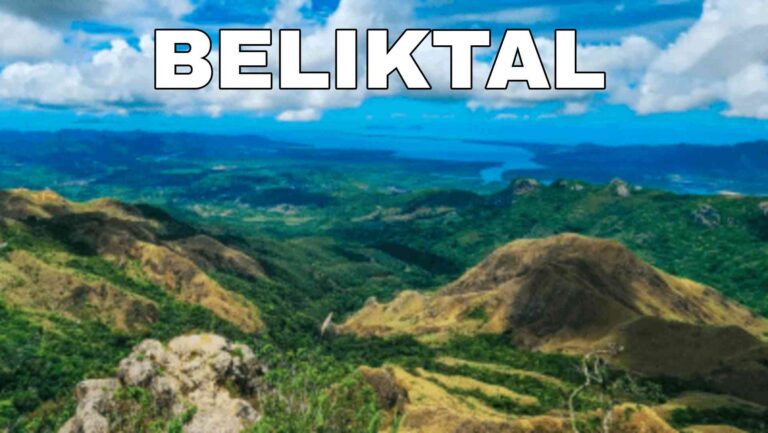
Beyond Doubloons: The Real “Coastal Gold” Shaping Our Future in 2025
Picture this: salty air, crashing waves, maybe a weathered dock. For centuries, coastlines whispered promises of hidden riches – sunken galleons, pirate loot. But step onto any thriving shoreline today, and you’ll witness a different kind of treasure hunt entirely. The term “coastal gold” has been reborn, folks, and in 2025, it represents something far more profound, sustainable, and frankly, exciting, than chests of glittering metal. Forget Jack Sparrow; the real pirates of progress are marine biologists, sustainable fishermen, renewable energy engineers, and savvy coastal communities unlocking immense value from and for our oceans, responsibly. This isn’t just about extraction; it’s about harmonizing human needs with the ocean’s incredible bounty and resilience. Buckle up, because we’re diving deep into the modern meaning of coastal gold and why it matters more than ever.
So, what exactly is this modern coastal gold? It’s not a single thing, but a vibrant tapestry of resources, innovations, and economic activities centered around our coastlines. Think less “X marks the spot,” more “collaboration unlocks potential.” It encompasses the sustainable harvest of seafood and marine plants, the innovative production of marine-derived products, the harnessing of immense ocean energy, and the evolution of coastal tourism that respects rather than ravages. It’s the foundation of the booming “Blue Economy,” projected by the OECD to potentially double in value to over $3 trillion globally by 2030. The real treasure? Building resilient coastal communities and a healthier planet.
Why the buzz now? A perfect storm (the good kind!) is brewing. Climate change realities are hitting hard, forcing us to seek resilient food and energy sources. Technology is finally catching up to the ocean’s challenges, making sustainable harvesting and energy capture viable. Consumers are demanding transparency and eco-conscious products like never before. And crucially, we’ve learned the hard way that plundering the ocean is a dead-end street. The 2025 perspective on coastal gold is fundamentally about regeneration, innovation, and long-term value creation. It’s gold with a conscience. Let’s unpack this treasure chest, sector by sector.
The Ocean’s Pantry: Sustainable Seafood & Marine Bounty
When most folks hear “coastal gold,” their minds might still jump to fish. And they wouldn’t be entirely wrong – seafood remains a critical global protein source and economic driver. But the way we access this gold has undergone a revolution. The old model of industrial-scale, often destructive fishing is increasingly giving way (thankfully!) to practices that ensure fish stocks aren’t just mined, but actively managed as renewable resources. This means coastal gold looks like local, small-scale fishers using selective gear, community-supported fisheries (CSFs) connecting consumers directly to the dock, and robust certification schemes like the Marine Stewardship Council (MSC) gaining real traction.
Aquaculture, or fish farming, is a massive part of this equation, but its reputation has been mixed. The coastal gold of 2025 is found in responsible aquaculture. Think offshore pens in deeper waters with strong currents that naturally disperse waste, drastically reducing environmental impact. Imagine land-based recirculating aquaculture systems (RAS) producing high-value species like salmon or shrimp close to urban markets, using minimal water and zero antibiotics. Companies like Atlantic Sapphire in Florida and Nordic Aquafarms pursuing projects in Maine and California are pioneers here. The key? Moving away from dense coastal pens that pollute and embracing innovation for truly sustainable production.
But the bounty goes beyond finfish. Shellfish – oysters, mussels, clams – are unsung heroes. They require no feed (they filter plankton!), actively clean the water as they grow, and create structured habitats. Coastal communities restoring oyster reefs aren’t just bringing back a delicacy; they’re building natural water filtration systems and erosion control. Then there’s the burgeoning world of lesser-known species. As traditional stocks face pressure, diversifying our palates to include abundant, underutilized species (like the delicious and plentiful Acadian redfish or grenadier) is crucial. It takes pressure off popular species and creates new markets – true coastal gold diversification!
Salt & Seaweed: The Mineral and Green Gems
Let’s get granular. Literally. Sea salt. It might seem humble, but artisanal sea salt production is experiencing a renaissance as coastal gold. Forget the bleached, additive-filled table salt. We’re talking about small-batch salts harvested using traditional solar evaporation methods. The unique mineral profile and flavor nuances imparted by specific coastlines (think Brittany’s fleur de sel or Hawaii’s red clay salt) command premium prices. Producers like Jacobsen Salt Co. in Oregon or Halen Môn in Wales have turned this ancient practice into a thriving modern business, emphasizing terroir and sustainability. It’s a beautiful synergy: using sun and wind to concentrate the ocean’s essence.
Now, let’s talk about the real green gold: Seaweed. This isn’t just the stuff that washes up on the beach. Seaweed farming is arguably one of the fastest-growing and most promising sectors within coastal gold. Why the hype? First, it’s incredibly sustainable. Seaweeds need no fresh water, no fertilizer, no land. They grow rapidly, absorbing significant amounts of CO2 and nitrogen (helping combat ocean acidification and eutrophication). Second, its uses are exploding:
-
Food: Nutrient-dense superfood (think nori, wakame, dulse), plant-based thickeners (carrageenan, alginate), umami seasonings.
-
Agriculture: Biostimulants to boost crop growth and resilience, livestock feed supplements reducing methane emissions.
-
Cosmetics: Hydrating and antioxidant-rich extracts for skincare.
-
Materials: Bioplastics, sustainable textiles (like Algiknit), bio-packaging.
-
Biofuels & Biochemicals: Research is booming in using seaweed for next-generation energy and industrial feedstocks.
The innovation here is breathtaking. Companies like Cascadia Seaweed in Canada or Atlantic Sea Farms in Maine (leading the US market) are pioneering large-scale, regenerative farming techniques. Research institutes are developing strains optimized for specific products. In 2025, investing in seaweed isn’t just trendy; it’s investing in a multi-faceted solution for food security, climate change, and circular economy goals. That’s coastal gold with serious global impact.
H2: Power from the Pulse: Harnessing Ocean Energy
The ocean is never still. Its relentless motion – waves, tides, currents, even the temperature difference between surface and deep water – holds an immense, untapped reservoir of clean energy. This is coastal gold with the power to literally light up our future. While still less mature than wind or solar, ocean energy is hitting crucial inflection points in 2025, moving beyond pilot projects towards commercial viability. It offers a key advantage: predictability. Tides are as reliable as clockwork, and waves are constant, providing baseload power potential that complements intermittent sources like solar.
Wave energy technology is diversifying rapidly. Think floating buoys that capture the up-and-down motion (like CorPower Ocean’s high-efficiency devices being tested in Portugal and Scotland), oscillating water columns that use air pressure from waves driving turbines, or submerged pressure differential systems. Tidal stream energy, using underwater turbines similar to wind turbines but driven by fast-flowing tidal currents, is particularly promising in specific geographic pinch points. Projects like the MeyGen array in Scotland’s Pentland Firth are demonstrating impressive generation capacity. Then there’s the cutting edge: Ocean Thermal Energy Conversion (OTEC), which uses the temperature gradient between warm surface water and cold deep water to drive a turbine. While technically challenging and location-specific (needing a ~20°C difference), pilot plants like those pursued by Makai Ocean Engineering show potential, especially for tropical islands.
The challenges? Cost and the harsh marine environment. Saltwater corrosion, powerful storms, and complex installation/maintenance drive up expenses compared to more established renewables. However, 2025 sees significant strides. Advanced materials (like composites resistant to biofouling and corrosion), smarter control systems leveraging AI for optimal performance, and larger, more efficient turbine designs are bringing costs down. Government support mechanisms and strategic partnerships (like the European Union’s ambitious targets and funding) are providing crucial momentum. The prize? A predictable, abundant, zero-carbon energy source generated right where a huge portion of humanity lives: near the coast. That’s energy security gold.
The Experience Economy: Regenerative Coastal Tourism
For decades, coastal gold often meant mass tourism: sprawling resorts, crowded beaches, cruise ships disgorging thousands. The environmental and cultural cost became impossible to ignore – pollution, habitat destruction, strain on local resources, and the erosion of authentic community character. The coastal gold of 2025 flips this script entirely. The treasure now lies in regenerative tourism – experiences that not only minimize harm but actively contribute to the health of the coastal environment and the well-being of local communities. It’s tourism that gives back, creating lasting value.
What does this look like on the ground? Forget generic beach holidays. Think:
-
Community-Based Ecotourism: Staying in locally-owned guesthouses or homestays, guided by community members on kayak tours through mangroves, birdwatching excursions, or sustainable fishing trips. Revenue stays local, fostering stewardship. (Think the Guna Yala archipelago in Panama, where indigenous communities manage tourism).
-
Voluntourism & Citizen Science: Combining travel with meaningful contribution – participating in coral reef restoration projects (like those in the Great Barrier Reef or Florida Keys), beach clean-ups, or marine species monitoring programs alongside scientists.
-
Cultural Immersion & Education: Learning traditional fishing techniques, seaweed foraging and cooking, coastal conservation history, or indigenous ocean knowledge directly from local experts and elders.
-
Low-Impact Adventure: Focusing on human-powered or low-emission activities like sailing, paddleboarding, coastal hiking trails (like the Oyster Trail in Virginia or sections of England’s South West Coast Path), and wildlife watching with strict ethical guidelines.
-
Supporting Conservation Fees: Destinations implementing fees that directly fund marine protected areas (MPAs) or conservation initiatives (e.g., Palau’s pioneering approach).
The shift is driven by travelers themselves. A 2025 survey by Sustainable Travel International indicated over 75% of travelers seek authentic, sustainable experiences that benefit local people and places. Resorts are responding by integrating conservation (onsite coral nurseries, mangrove planting), sourcing hyper-locally (including that coastal gold seafood and seaweed!), and employing and empowering local residents. This model builds resilience, protects the very resources that attract visitors, and creates a far richer, more meaningful experience – the true gold for both traveler and host community.
Challenges & The Path Forward: Mining Responsibly
Let’s be real: unlocking coastal gold isn’t without its hurdles. The ocean is a complex, interconnected system, and human activity, even well-intentioned, can have unforeseen consequences. The biggest challenge remains balancing economic opportunity with ecological integrity. Overexploitation lurks as a constant threat if robust governance and monitoring aren’t in place. Conflicts arise: where should seaweed farms go without impeding shipping lanes or critical fish habitats? How do we site wave energy devices without impacting marine mammals or seabirds? Coastal space is finite and highly contested.
Climate change is the ultimate wildcard. Rising sea levels threaten coastal infrastructure, including potential aquaculture sites or tourism assets. Ocean acidification harms shellfish and coral reefs fundamental to ecosystems and fisheries. Warming waters shift fish stocks, disrupting traditional fishing grounds and challenging management plans. Increased storm intensity poses risks to offshore operations like energy devices or aquaculture pens. Adapting coastal gold industries to this changing baseline is non-negotiable.
The path forward hinges on collaboration and innovation:
-
Stronger Science-Based Management: Continuously improving data on fish stocks, ecosystem health, and climate impacts to inform quotas, spatial planning (Marine Spatial Planning – MSP), and adaptive management strategies.
-
Investing in Blue Tech: Scaling up R&D for more efficient, lower-impact aquaculture systems, more durable and cost-effective marine energy converters, and better monitoring tools (drones, AI analysis of satellite data).
-
Empowering Coastal Communities: Ensuring local communities have a genuine stake and voice in coastal gold developments through co-management models, equitable benefit-sharing, and capacity building. Their traditional knowledge is invaluable.
-
Circular Economy Principles: Designing out waste. Using by-products from seafood processing (fish bones for calcium supplements, shells for chitosan), seaweed waste for bio-packaging or fertilizers. Nothing wasted.
-
Conscious Consumerism: You hold power! Choosing MSC-certified fish, seeking out regeneratively farmed seaweed products, opting for coastal tourism operators with proven sustainability credentials, and supporting policies that protect the ocean. Demand drives the market.
Coastal Gold in Action: Case Studies of Success
Seeing is believing. Let’s look at a few places where the modern coastal gold concept is thriving:
-
Norway: Salmon & Energy Synergy: Norway is a global leader in both offshore aquaculture (particularly salmon) and marine energy (especially tidal and wave). They are actively exploring synergies, like co-locating offshore fish farms with wave energy devices that could power the farm operations. Strict environmental regulations and heavy investment in R&D underpin their success, demonstrating how high-value coastal gold sectors can coexist with strong environmental oversight. Their focus on technological innovation keeps them at the forefront.
-
Maine, USA: Kelp is King (and Queen): Maine’s cold, clean waters are ideal for sugar kelp farming. Pioneered by women-led companies like Atlantic Sea Farms, this industry has exploded. Farmers (often former lobstermen or their families) grow kelp on vertical lines during the winter “downtime,” creating a new income stream. Atlantic Sea Farms processes the kelp into a range of consumer products (frozen purees, ferments, burgers), creating jobs and market demand. It’s a prime example of diversification, community resilience, and tapping into the superfood seaweed trend responsibly. Coastal gold supporting working waterfronts.
-
Japan: Integrating Tradition & Innovation: Japan has a deep cultural connection to the sea (think sushi!). Facing challenges like overfishing and an aging fishing population, they are blending tradition with tech. Examples include precision aquaculture using sensors and AI to optimize fish health and feeding, revitalizing coastal communities through oyster tourism and high-value seaweed cultivation (like Mozuku), and pioneering offshore wind projects while carefully assessing fisheries impacts. Their approach respects heritage while embracing necessary innovation for future coastal prosperity.
Conclusion: The Real Treasure is Stewardship
The romantic image of buried pirate gold? It pales in comparison to the tangible, sustainable wealth our coastlines offer right now. The true “coastal gold” of 2025 isn’t a finite hoard to be plundered; it’s a dynamic, living system of resources and opportunities that, when managed with wisdom, foresight, and respect, can support thriving communities, nourish populations, power our homes, and inspire us for generations to come. It’s the succulent oyster filtering the estuary, the resilient kelp forest absorbing carbon, the predictable pulse of the tide turning turbines, and the authentic connection forged between a traveler and a coastal culture.
This gold rush is different. It demands not picks and shovels, but science, collaboration, innovation, and above all, a profound commitment to stewardship. We are not merely miners; we are caretakers of an irreplaceable blue frontier. The choices we make today – what we buy, how we travel, the policies we support – determine whether coastal gold remains a glittering promise or tarnishes into another tale of exploitation. By embracing the principles of the Blue Economy – sustainability, inclusivity, and circularity – we can ensure our coastlines continue to yield their riches, not just in 2025, but for centuries beyond. The greatest treasure we can uncover is a healthy, productive ocean. Let’s invest in that.
FAQs: Your Coastal Gold Questions Answered (Informally!)
-
“Okay, but seriously, is anyone still finding actual gold coins on beaches?” Ha! It does happen incredibly rarely, usually after major storms erode specific historic wreck sites. Think more metal detector hobbyists getting lucky once in a blue moon than a career path. The real, reliable wealth today comes from the sustainable resources and activities we’ve talked about, not buried treasure chests!
-
“Seaweed farming sounds cool, but doesn’t it mess up the ocean views or hurt fish?” Fair concern! Responsible farming is key. Modern operations, especially larger offshore ones, are designed to be low-profile. Regulations often keep them out of prime scenic areas. Ecologically, well-managed seaweed farms are generally beneficial! They create habitat for small fish and invertebrates, improve water quality by absorbing excess nutrients, and don’t require dredging the seabed like some shellfish operations. It’s about smart siting and sustainable practices.
-
“Wave power? Sounds like sci-fi. Is it actually working anywhere?” It’s moving fast from sci-fi to reality! While not powering entire cities yet, several projects are feeding significant electricity into grids. Portugal, Scotland, and Australia are hotspots. Think smaller-scale but proven: powering remote islands, desalination plants, or specific coastal facilities reliably. The tech is maturing rapidly, and 2025 is seeing bigger deployments and falling costs. It’s definitely one to watch!
-
“This ‘regenerative tourism’ sounds pricey. Is it just for rich folks?” Not necessarily! While some high-end eco-lodges exist, the core is about the model, not the price tag. Staying in a local B&B, eating at a family-run seafood shack using local catch, hiring a community guide for a nature walk, or simply choosing a destination with a strong conservation ethic (maybe paying a small entry fee that funds protection) – these are all part of it. It’s about where your money goes and the impact of your choices, which can fit many budgets. Sometimes, spending less on a giant resort and more on authentic local experiences is the regenerative choice!
-
“Wait, isn’t all this ‘coastal gold’ talk just greenwashing for more ocean exploitation?” That’s a crucial question, and skepticism is healthy! The term could be misused, absolutely. The proof is in the pudding: Look for transparency, strong science-based regulations (like enforced quotas, protected areas), credible certifications (MSC for fish, ASC for some aquaculture), community involvement, and measurable environmental benefits (like water quality improvements from shellfish beds or kelp farms). Real coastal gold leaves the ecosystem healthier and benefits locals, not just distant corporations. Demand proof and support the genuine practitioners!






